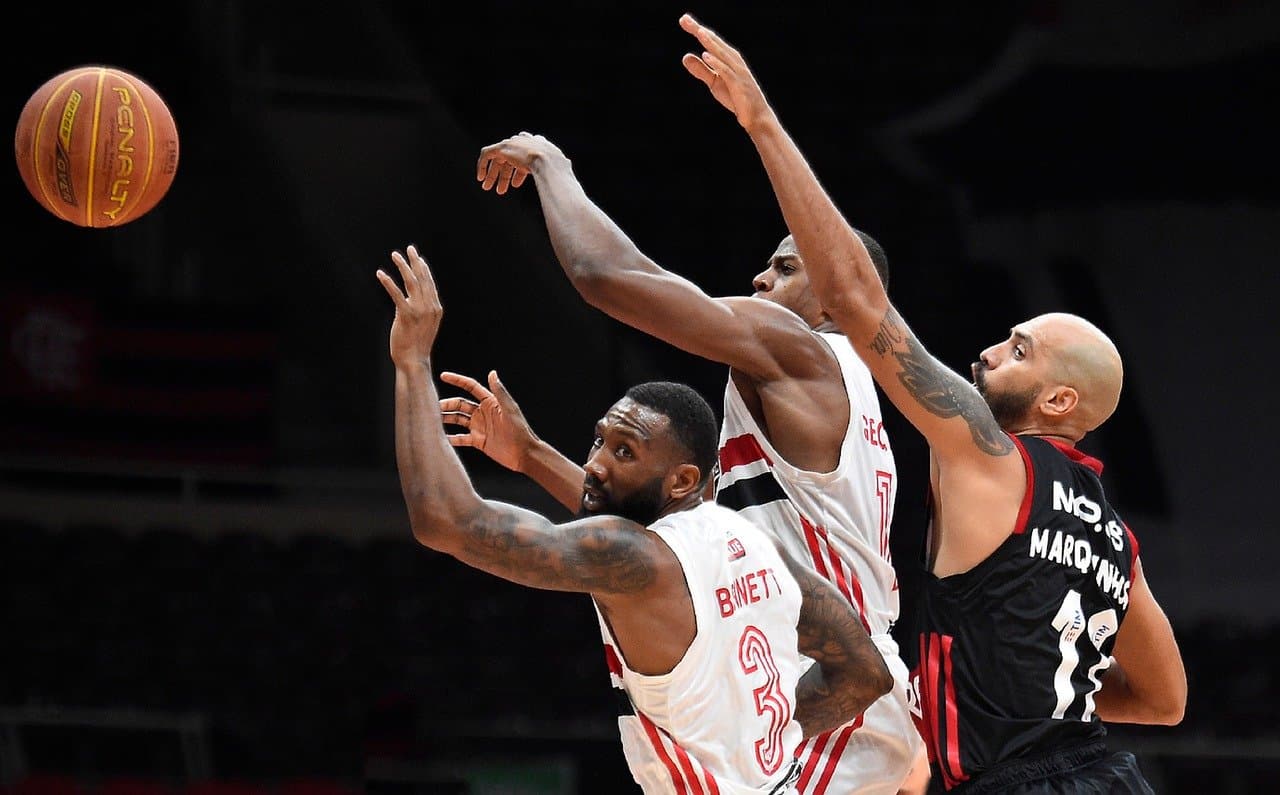Basketball players, like any professionals, need avenues to unwind and relax off the court. Amid the high-pressure games and rigorous training schedules, many have found solace in the world of trading. Trading offers them a chance to engage in a completely different kind of strategy, shifting focus from physical prowess to financial acumen. It’s not just about the thrill of making a profitable trade; it’s also about the analytical challenge and the continuous learning curve. Platforms like Exness become their court away from the court, providing a comprehensive suite of tools for trading across various markets. They download Exness latest version to ensure they have access to the most updated features, enabling them to make informed decisions based on real-time data and analytics.
The appeal of trading for these athletes lies not only in the potential financial gains but also in the mental engagement it offers. It requires discipline, patience, and a keen understanding of risk—qualities that parallel their athletic endeavors. By downloading Exness, they equip themselves with a powerful ally in navigating the complexities of the financial markets. This activity doesn’t just serve as a distraction; it complements their competitive nature, offering a parallel universe where victories are measured in financial growth and strategic foresight. Moreover, the community aspect of platforms like Exness allows them to connect with fellow traders, sharing insights and strategies, thus enriching their experience far beyond the solitary confines of individual trading.
Overview of Trading as a Method of Unwinding
Trading, often viewed through the lens of its financial objectives and the pursuit of profit, serves a surprisingly therapeutic role for many individuals as a method of unwinding. At its core, trading involves analyzing market trends, making predictions based on available data, and executing buy or sell orders based on those predictions. This process, while inherently tied to the potential for financial gain or loss, also engages the trader in a deeply immersive experience that can offer significant psychological benefits.
For starters, trading demands focus and concentration, pulling individuals away from their everyday stresses and into a state of flow. This state, characterized by a profound immersion in the task at hand, mirrors the effect of mindfulness practices, allowing traders to experience a form of mental respite. The analytical aspect of trading—pouring over charts, following news developments, and predicting market movements—can stimulate the mind, providing a distraction from personal or professional concerns. In this way, trading acts as a mental workout, offering cognitive stimulation while simultaneously allowing the brain to ‘switch gears’ from the routines and worries of daily life.
Furthermore, the discipline required in trading—setting strategies, sticking to plans, and managing risks—parallels the structured practices found in hobbies that promote relaxation and mental health. The satisfaction derived from a well-thought-out trade, even more than the financial outcome itself, can boost self-esteem and provide a sense of accomplishment. Additionally, the global nature of financial markets means that trading can be done virtually anytime and anywhere, providing a flexible outlet for stress relief that can be tailored to fit into various lifestyles.
However, it’s important to approach trading with the right mindset. Successful traders often view their activities not just as a hunt for profit, but as a process of continuous learning and self-improvement. This perspective transforms trading from a mere financial transaction into a personal journey, enriching the experience beyond the monetary aspects. By embracing the ups and downs of the market with a sense of curiosity and resilience, trading can become a fulfilling method of unwinding, blending the excitement of the chase with the satisfaction of personal growth.
Importance of Unwinding for Basketball Players

Unwinding is crucial for basketball players for several reasons, touching on aspects of physical health, mental well-being, and overall performance on the court. Basketball, being a high-intensity sport, demands a lot from players, including rigorous training schedules, competitive matches, and the mental stress of performing under the public eye. Here’s why unwinding is indispensable for them:
- Physical Recovery: The physical demands of basketball—running, jumping, and quick directional changes—put significant stress on the body. Unwinding and relaxation techniques, such as massage, yoga, or simply taking time off, help in muscle recovery and reduce the risk of injuries. These activities facilitate the body’s repair processes, ensuring players remain in peak physical condition.
- Mental Health: Beyond the physical toll, the mental pressure of constant competition, expectation to perform, and the scrutiny faced can be overwhelming. Engaging in activities unrelated to basketball allows players to detach, reduce stress, and clear their minds. Whether it’s trading, video games, or other hobbies, these activities can serve as an essential mental break, aiding in focus and decision-making on the court.
- Performance Enhancement: There’s a strong link between relaxation, mental health, and performance. By unwinding and managing stress effectively, players can improve their concentration, confidence, and ultimately, their performance in games. A well-rested mind and body can react faster, make better decisions, and endure the physical demands of the sport more effectively.
- Longevity in the Sport: Regularly taking time to unwind and recover not only addresses short-term recovery but also contributes to a longer career in the sport. Managing physical and mental stress through relaxation and unwinding activities can help prevent burnout, ensuring that players can perform at their best for a longer period.
- Personal Development: Engaging in activities outside of basketball contributes to personal growth and development, allowing players to build identities beyond their athletic careers. It opens up avenues for new skills and interests, which can be crucial for their life after basketball.
For basketball players, unwinding is not just about taking a break; it’s a strategic part of their training and career longevity plan. It aids in balancing the physical and mental aspects of their profession, enhancing their quality of life both on and off the court.
The Concept of Trading as a Relaxation Method
The concept of trading as a relaxation method might seem counterintuitive at first glance, given the high stakes and volatility associated with financial markets. However, when approached with the right mindset, trading can indeed serve as a potent relaxation technique, offering both mental engagement and an escape from the routine stresses of daily life. Here’s how trading transcends its primary financial goals to become a form of relaxation and mental respite for some individuals:
1. Flow State Activation
Trading requires a deep focus and analysis of market trends, charts, and economic indicators. This intense concentration can lead individuals into a “flow state,” a psychological state where a person is fully immersed in an activity, enjoying the process, and losing track of time and external worries. Achieving this state through trading can provide a sense of fulfillment and tranquility, similar to the satisfaction derived from hobbies or artistic endeavors.
2. Controlled Exposure to Risk
For many, the act of trading offers a controlled environment to engage with risk. Unlike the uncertainties of daily life, which can often feel overwhelming and unpredictable, the risks in trading are defined and can be managed through strategies such as stop-loss orders and diversification. This controlled exposure to risk can be exhilarating and rewarding, providing a sense of achievement when a strategy pays off, thus offering a psychological boost and a form of mental relaxation.
3. Learning and Self-Improvement
Trading is a never-ending learning process, with the market serving as a dynamic classroom that presents new lessons daily. For those passionate about personal growth, the pursuit of knowledge in trading—ranging from analyzing financial statements to understanding global economic trends—can be intellectually stimulating and relaxing. This continuous education fosters a growth mindset, which is inherently rewarding and relaxing for many individuals.
4. Distraction from Everyday Stress
Engaging in trading can offer a welcome distraction from the stresses of everyday life, providing a mental break that allows individuals to recharge. The analytical and strategic aspects of trading demand such attention that they temporarily push aside personal or professional worries, offering traders a respite and allowing them to return to their daily tasks with renewed focus and energy.
5. Community and Social Interaction
Trading, especially with the advent of online forums and social trading platforms, fosters a sense of community among traders. Sharing insights, discussing strategies, and supporting each other through wins and losses create social bonds. This community aspect can be particularly relaxing and fulfilling, as it provides a sense of belonging and support, reducing feelings of isolation.
Approached with discipline, a clear strategy, and an awareness of its potential risks, trading can serve as an engaging and fulfilling way to unwind. It’s the blend of intellectual challenge, the thrill of risk management, and the joy of learning that can transform trading into a surprisingly effective relaxation method for those drawn to the financial markets.
Common Trading Practices Among Basketball Players
Basketball players, like many athletes, often look for hobbies and activities outside of their sport to engage in during their downtime. Trading has become one of the more popular practices among players, thanks to its accessibility, the thrill of competition it offers in a different arena, and the potential for financial gain. Here are some common trading practices among basketball players, reflecting how they approach the market:
Starting with Education
Many basketball players begin their trading journey by educating themselves about the financial markets. This might involve taking online courses, reading books on trading strategies, or using simulators to practice trading without real financial risk. Education is a crucial step, as it lays the foundation for informed decision-making in the market.
Using Trading Platforms
Players often use reputable trading platforms that offer a user-friendly interface, real-time data, and analytical tools to make informed decisions. They might prefer platforms that provide mobile access, allowing them to monitor their investments and trade on-the-go, fitting trading activities around their training and game schedules.
Diversification
Understanding the importance of not putting all their eggs in one basket, basketball players tend to diversify their portfolios. This might mean investing in a mix of stocks, bonds, commodities, and cryptocurrencies, depending on their individual risk tolerance and investment goals. Diversification helps manage risk and can provide a steadier return over time.
Social Trading
Social trading platforms, which allow traders to copy the trades of more experienced investors, are popular among athletes, including basketball players. This approach can be particularly appealing to those who are new to trading or those who don’t have the time to manage their trades actively. It allows players to leverage the expertise of seasoned traders while learning about the market dynamics.
Risk Management
Professional athletes are no strangers to the concept of risk management, both on and off the field. In trading, they apply similar principles by setting stop-loss orders, only investing money they can afford to lose, and being mindful of not letting emotions drive their trading decisions. This disciplined approach is crucial in managing the inherent risks of trading.
Long-term Investing
While some players may engage in day trading, many focus on long-term investing strategies, looking for growth opportunities that will pay off over time rather than seeking quick profits. This approach requires patience and a focus on fundamental analysis to identify companies or assets with strong long-term potential.
Peer Networking
Basketball players often network with their peers who also trade, sharing tips, news, and strategies. This camaraderie extends beyond the court, providing a support system and a way to exchange valuable insights about trading and investing.
These common trading practices among basketball players highlight a strategic and disciplined approach to the market, mirroring the dedication they apply to their sport. Whether it’s the pursuit of personal growth, financial independence, or simply a way to unwind, trading offers an engaging and rewarding activity for athletes off the court.
Conclusion
The intersection of trading and professional sports, particularly among basketball players, underscores a broader trend of athletes engaging in financial markets as a means of personal development, investment, and relaxation. This phenomenon reflects not just the financial acumen growing among sports professionals but also a keen interest in leveraging their discipline, focus, and competitive spirit in arenas beyond the basketball court.
Basketball players approach trading with the same rigor and strategic thinking that they apply to their sport. By prioritizing education, utilizing advanced trading platforms, embracing diversification, engaging in social trading, practicing disciplined risk management, focusing on long-term investments, and leveraging peer networks, they navigate the financial markets effectively. These practices not only demonstrate their commitment to financial literacy and independence but also highlight trading as a valuable tool for mental engagement and relaxation.



